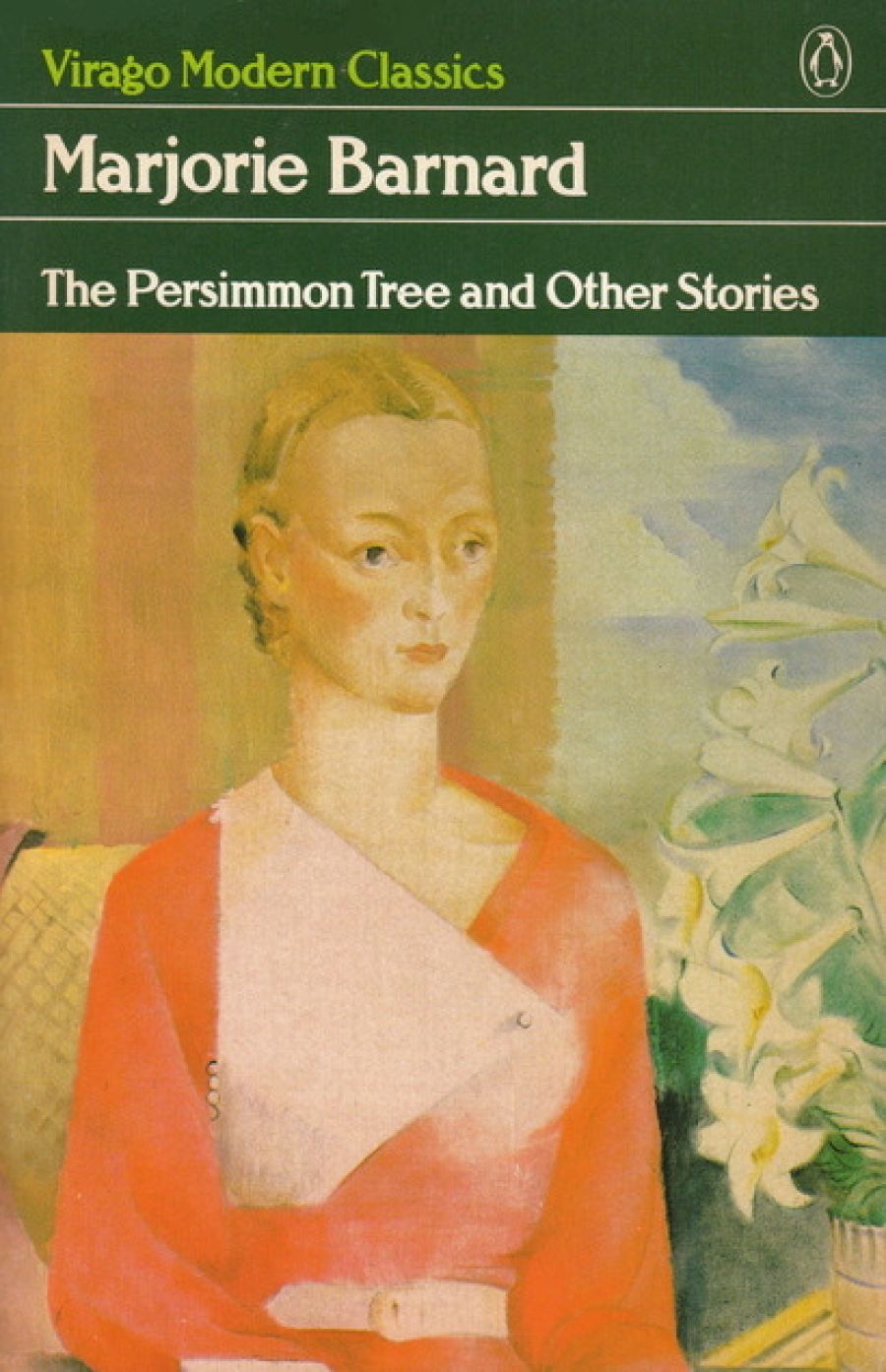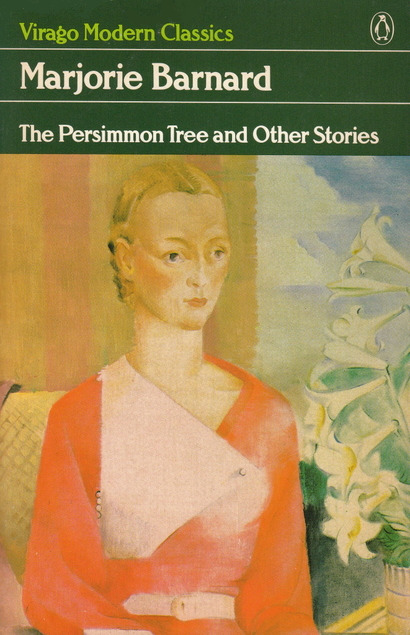
- Free Article: No
- Contents Category: Fiction
- Review Article: Yes
- Article Title: Reissues
- Online Only: No
- Custom Highlight Text:
Marjorie Barnard, is, of course, a collaborator with Flora Eldershaw in the writing of five novels as well as several other books, under the collective name of M. Barnard Eldershaw. The stories in this collection, most of which were first published in various Australian magazines before they were brought together in 1943, represent her only attempt at solo fiction writing. All of them have some value and interest and among them are some classics, notably the title story which was reprinted in Coast to Coast and has been frequently anthologised since, most recently in Laurie Hergenhan's The Australian Short Story.
- Book 1 Title: The Persimmon Tree and Other Stories
- Book 1 Biblio: Virago Press, $7.95 pb, 182 pp
- Book 1 Cover Small (400 x 600):

- Book 1 Cover (800 x 1200):

Reading these stories is to realise again how much of women’s commonplace experience remains relatively undocumented. Writers like John Morrison, Gavin Casey, Leonard Mann, Frank Hardy and others have given us a comprehensive coverage of the world of men – the world of work, of drinking in pubs, of gambling, of an exclusively male camaraderie. Even the slightest of the stories here do something to redress this imbalance.
In ‘Beauty Is Strength’, for instance, a middle–aged woman ponders how to cope with the revelation of her husband’s infidelity – in the banal and quintessentially female setting of a hairdresser’s where she is getting a perm done. Gwenda in ‘The Wrong Hat’ suffers the ignominy of realising how much and how visibly she has aged when she tries on a hat that is much too young for her. Stories like this, like ‘The Dressmaker’ and like ‘The New Dress’ in which an adolescent’s date with a boyfriend is ruined by her dress being spoiled in the rain, announce their preoccupations in the titles. The dramas and the tragedies in these stories are mostly domestic, played out against the backdrop of ironing-board and dinner table.
Particularly illuminating as an example of the female perspective is a story called ‘The Lottery’, which takes up a situation which John Morrison has explored in several of his stories – the effect on a couple of a big win in Tatt’s – and which seems almost to have been written in response to the male view of this. In Morrison’s versions of this situation the women often become the catalyst of disturbance and estrangement, sometimes driving two mates apart. In Barnard’s story a man who believes himself to have a reasonably if not outstandingly successful marriage is told by his fellow passengers on the ferry on which he regularly returns home that his wife has won £5,000 in a lottery. Puzzled as to how she acquired the money for the ticket as well as why she failed to tell him of the win but nevertheless excited he congratulates her – to find that after setting out dinner and making arrangements for a housekeeper to look after him and the children she is walking out ‘Before it is too late.’
The story ends like this:
Then you meant what it said in the paper, ‘Last Hope?’ he said.
‘Yes,’ she answered.
In this particular case it is the woman who takes the initiative but many of these stories are concerned with female protagonists in various conditions of isolation, solitude or abandonment. In one story a woman returns home after the ordeal of ‘The Party’ and we are told: ‘She had left a world that, if it wasn’t safe, was at least warm. It was being alone that was so terrible.’
This documentation of ‘being alone’ can reach depths of unbearable pathos in the best of these stories. Apart from ‘The Persimmon Tree’, stories that would do any future anthology of Australian short fiction proud would be ‘Fighting in Vienna’, ‘Speak to Me’ and one of the most desolate and moving stories I have ever read, ‘Tree Without Earth’.
This is a very fine collection that moves from the relatively shallow deductive observation of the earlier stories into deeper and darker areas of human feeling. Apart from the wretched quality of the proofreading it is yet another fine example of Virago’s magnificent resurrection of buried or forgotten Australian classics.


Comments powered by CComment